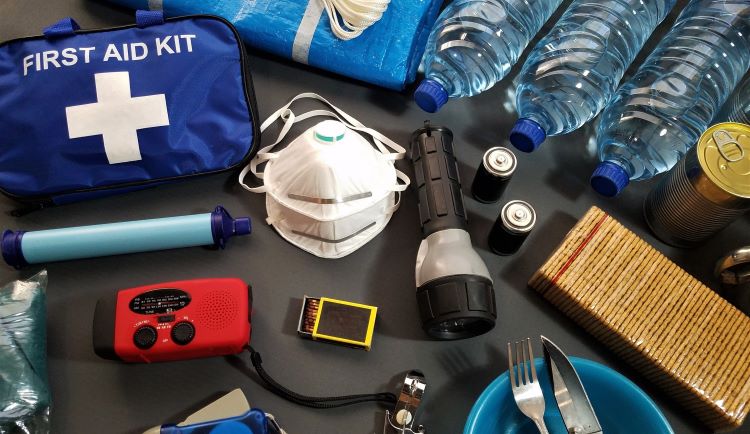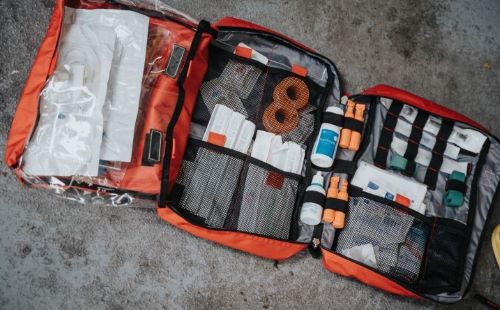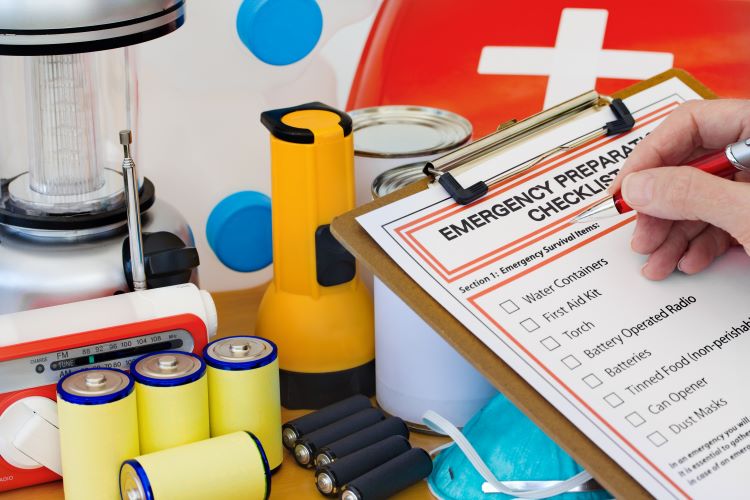Essential Items For A Senior-Friendly Emergency Kit

When an emergency strikes, it’s not just about being prepared; it’s about ensuring the safety and comfort of those most vulnerable. A one-size-fits-all emergency kit won’t cut it for seniors with specific health, dietary, and mobility needs. That’s where tailoring an emergency kit to suit the unique challenges older adults face becomes crucial.
I will walk you through why having an emergency kit customized for an older person is more than a precaution—it’s a vital aspect of caregiving. Whether dealing with power outages, natural disasters, or other unforeseen events, a well-stocked and thoughtfully prepared kit can be a true lifeline.
Related – Looking for the Best Survival Prepper Supply Kits?
You’re going to find out about the essentials that should be included in every senior-friendly emergency kit, which not only meet the baseline for emergency preparedness but also go a step further to address the nuanced needs of seniors. This kit will be designed to cover all bases, from ensuring easy access to medications to incorporating comfort items that can ease stress.
Here’s a table listing the example contents of a bug-out bag for a senior citizen:
| Category | Contents |
|---|---|
| Water & Food | – Water bottles or pouches – Non-perishable food (canned, energy bars) |
| Clothing | – Weather-appropriate clothing (layers) – Extra socks and underwear – Sturdy shoes or boots |
| Shelter & Bedding | – Compact tent or emergency shelter – Sleeping bag or blankets – Mylar emergency blankets |
| First Aid & Health | – First Aid Kit (bandages, antiseptics, medications) – Prescription medications (if needed) – Personal hygiene items |
| Communication | – Cell phone with charger (external battery) – Battery-powered radio – Whistle or signaling device |
| Tools & Equipment | – Multi-tool or Swiss Army knife – Duct tape – Paracord or rope – Flashlight with extra batteries |
| Documents & Money | – Copies of ID and important documents – Medical records and emergency contacts – Cash in small denominations |
| Navigation | – Maps of the area and compass |
| Entertainment | – Books, playing cards, puzzle games |
| Lighting | – Flashlight, headlamp, and spare batteries |
| Personal Care | – Toiletries, soap, hand sanitizer – Prescription glasses or hearing aids (if needed) |
| Miscellaneous | – Notepad and pen – Sewing kit – Spare keys – Mask and gloves (COVID considerations) |
Please note that the contents can be customized based on individual preferences and specific needs. This table provides an easy-to-read overview of the essentials for a senior citizen’s bug-out bag. Regularly review and update the contents to ensure everything remains in good condition and within expiration dates.
Don’t worry too much about getting it perfect from the get-go. You can always adjust your approach down the road. But starting with a strong foundation is key—and that begins with understanding medical requirements, which I’ll introduce next. By the end of this section, you will appreciate the thoughtful inclusion of each item and be ready to consider the medical necessities at the heart of a senior-friendly emergency kit.
Medical Must-Haves: Prioritizing Health in Emergencies
Ensuring that a senior has access to necessary medications is imperative during emergencies. In case of prolonged disruptions, you must organize a supply of all prescribed medications, including at least a week’s worth, preferably more. Now, since some medications require special storage conditions, like refrigeration, you’ll want to look into portable, insulated medication coolers, which can be a game-changer.

A well-stocked first aid kit is also crucial and should be more than just band-aids and antiseptic wipes. You’re looking to include handy-dandy items for seniors, such as blister pads for feet, arthritis-friendly bandage openers, and extra supplies of any over-the-counter remedies they regularly use. Remember to check these supplies regularly because, just like food, they can expire.
Read this – Survivalism
It’s not just about packing the essentials—it’s also about making sure you can use them when needed. That means including clear, easy-to-read instructions for medical devices, such as blood pressure monitors or glucose meters. Having a list of emergency contacts, medical providers, and a detailed medication list with dosages and schedules can be crucial when seniors can’t communicate this themselves.
Nutritional Needs and Comfort Foods
When putting together an emergency kit for a senior, paying attention to nutritional needs is crucial. Seniors often have specific dietary restrictions or preferences, so choosing non-perishable items that cater to these needs is important. Things like low-sodium soups, canned fish high in Omega-3s, and sugar-free snacks can help meet dietary requirements without compromising nutrition.
Related – Top 10 Survival Prepper Foods to Have on Supply in an Emergency
Hydration is another critical aspect you can’t overlook. Water is a must, but also pack hydration options like electrolyte packets or coconut water that provide additional nutrients. Dehydration is a real risk for seniors, especially during stressful conditions, so having various options can be a lifesaver.
In addition to nutrition and hydration, comfort foods are essential in an emergency kit. Emergencies are tough on everyone, but they can be particularly disorienting for seniors. Favorite snacks that are also shelf-stable, like granola bars, dried fruit, or dark chocolate, can lift spirits and provide a sense of normalcy.
While food and drink are vital, ensuring your senior loved one can access and communicate their needs is equally important. That’s where the conversation turns to our next section.
Wrapping Up: Creating a Haven of Safety for Seniors
At this stage, you’re equipped with knowledge of the vital elements of a senior-friendly emergency kit. It’s not just about having a set-it-and-forget-it box in the corner; it’s about crafting a haven of safety for those times when life throws a curveball. Remember, all the items in your emergency kit factor into a larger picture of preparedness, comfort, and dignity.
You can always adjust your approach down the road. As health conditions or dietary needs change, so should the contents of your emergency kit. It’s a living resource that should evolve with the individual it’s designed to support.
Don’t worry too much about getting everything perfect from the get-go. Your first attempt doesn’t need to be your last. The key is to start from a place of empathy and understanding. Choose something that resonates with you and your loved one’s needs and preferences. This is what makes an emergency kit truly senior-friendly.
Related – Human Psychology in Survival Situations
I really hope that this guide has empowered you to prepare effectively for any future incidents. Being proactive about safety isn’t just a precaution—it’s a way of showing love and care to seniors who have given so much. If you want to delve into it deeper or have any questions, I’m here to help you with that journey. Ultimately, it all boils down to providing a sense of security and comfort when needed most.






